#lady frau
Explore tagged Tumblr posts
Video
Viviamo_Numana_0093_b da caleidoscopio concerti Tramite Flickr: Viviamo Numana ... - We live in Numana ... youtu.be/QIPQnB-Iyno
#Lia#wife#moglie#compagna#woman#lady frau#mare#sea#see#acqua#wasser#water#colore#colors#mare adriatico#numana#conero Ancona#Marche#luce#light#look#eleganza#people#gente#flickr
2 notes
·
View notes
Text

I am 59, the older I am, the younger men I like.😊
186 notes
·
View notes
Text
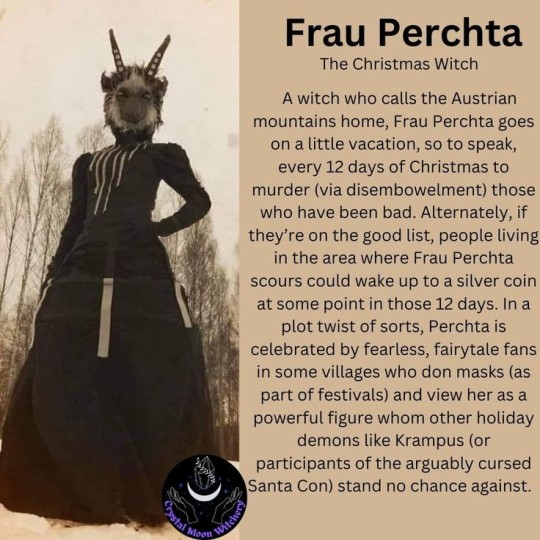
#hexe#magick#witch community#witchcraft#baby witch#beginner witch#pagan witch#witch tips#chaos magick#witchblr#frau perchta#lady perchta#perchta
76 notes
·
View notes
Note
hi klavier! Been a while huh?
-@ask-the-greatest-thief

“Ja! It’s a pleasure, Frau Faraday!”
#klavier answers#can be interpreted as any klavier#klavier gavin#ace attorney#asks open#ask blog#aa4#rp blog#roleplay requests open#kay faraday#kay mention#(ooc: I just cannot handle that Klavier regularly disrespects women he enjoys the company of in canon. so. frau and not fräulien.)#(for ladies he enjoys being around.)
12 notes
·
View notes
Text
me: here's a vague idea I have for something I'm working on :D
@fraugwinska:

I LOVE YOU FR 💕
7 notes
·
View notes
Text

#phoneography#mobiele telefoon fotografie#mobile phone photography#smartphoneography#smartphone fotografie#smartphone photography#fashion#mode#fashion photography#modefotografie#moda#style#stylish#stijl#dress#jurk#kleid#robe#model#street style#girl#woman#femme#lady#vrouw#Frau#feminine#no bra#see through#Den Haag
6 notes
·
View notes
Text
Nobody seems to care about poor Frau Holle... But it won't stop me from posting about her :p I started exploring an article about the fairytale and the character here ; there's another set of information within the article I want to share with you. It is about the various analysises that can be performed about the heroine-girl's action.
If you don't recall, when the girl falls down the well into the world of Frau Holle, she encounters a talking oven which asks her to remove its bread before it will burn, and then a talking apple-tree which asks her to pick its ripe apples before they will rot. It is concluded by the girl encountering Frau Holle who tasks her with keeping up the house clan and shaking the pillows out of the window to cause the snow to form.
As the article points out, this entire passage is a "formation" passage, an "initiation" journey. The girl falls down the well into a mysterious land of abundance, eternal summer and talking inanimate objects: this is a traditional "entrance to the Otherworld" story. But the fall down the well also has a dual symbolism. The most famous one, very often reused, is the symbolism of death: falling down the well usually kills a person, it is also a descent into the underground, the original text of the Grimm implied that the fall might have been a form of suicide (more about this later), wells are traditionally associated with ghosts, and finally Frau Holle herself and her house have been analyzed as symbols of death. But that's just one reading - the other, closely associated to the first since remember Death and Sleep are twins, proposes to read the journey to Frau Holle as a dream. Falling down the well could represent someone literaly "falling asleep", or falling into the sleep ; especially since the bed is such a strong focus in this magical place where seasons are mixed and the up and down don't mean anything anymore. The return to the world of the humans would then mean the girl "waking up".
But what is even more interesting is to look at the specific tasks the girl undergoes. Yes, of course, we can just look at this as just "Oh it's the typical trope of the girl helping poor people in need"... But there's more to that.
The most obvious and highlighted symbolism of those tasks is what the article calls a "social moral". By performing these tasks, the girl isn't just helping random things in need: she is obeying to figures of authority giving her orders, she acts as an assistant and a servant, and thus "learns her place" within the world. This is especially obvious when you consider that the tasks the girl performs are... domestic chores. Not just any domestic chores: they are the jobs typically devoluted to girls and women in the rigidly-gendered society of the 19th century. The girl learns what all "good girls" must learn: taking care of the bread in the oven, picking up the apples in the orchard, cleaning the house, preparing the beds. Cleaning and cooking. This symbolism was probably insisted by the brothers Grimm themselves since we know they purposefully modified their fairytales so that they would be more "fit" for the education of young people...
But this is just one reading and one level of symbolism of the fairytale. If fairytales only meant one thing, they wouldn't be fairytales - and there's always deeper meaning beyond the obvious ones. In the case of Frau Holle, the article takes back ideas developed by Euge Drewermann: if we decide to look at the heroine's actions as made out of altruism rather than obediance, we fall back onto the traditional trope "the good hero helps those in need"... But we can dig deeper than that.
The girl isn't just helping people or performing social tasks... The girl answers necessities. She answers to pressing need linked to the way the world works. She removes the bread, because if the bread is not removed the fire will burn it - there is a pressing need to avoid that. The apples are to be picked because they are ripe and it is time: they are under threat of rotting away. And the pillows need to be shaken because snow needs to fall... There is a "cosmic need" at work here, tied to the very elements (fire, snow) and to a race against a force of nature or flow of time that cannot be stopped (the apples that will rot for example). As such Drewermann decided to highlight an opposition in the tale between Frau Holle and the wicked stepmother. Frau Holle is in this dichotomy, "Mother Nature" and the stepmother a "Mother Society": because the stepmother embodies by her cruelty and favoritism all the forms of unbalance, injustice and problems caused by the social life, and by a human society where greed, selfishness and personal gain rule - this is the bad "Mother Society". Frau Holle meanwhile is the "Mother Nature", of the natural world, as a goddess of the seasons, but as such she also embodies as a form of balance and harmony: as a spirit of cycles and elements, she also represents a form of cosmic justice and natural order, opposed to the disorder of a human society. As such, the heroine's kindness and altruism is actually part of a greater system where humanity is in cohesion with nature and the world around it - the girl answers to the cosmic and biological order, and is thus rewarded by it. We can almost go into a philosophical reading of the tale which teaches us that we will be rewarded if we simply approach the world under a benevolent angle and with an accepting mindset, and if we do our best to serve and help the universe around us. We might become submit to the whims and needs of other inhuman powers beyond our own consideration (such as a talking oven and a talking tree), but by doing so we actually not only get rewarded - we become able to literaly "go beyond despair", the same way the girl went beyond the well (symbol of her suffering and her family's cruelty) into the peaceful and heavenly realm of Frau Holle where everything is in balance and perfect.
This reading could almost be read as a form of ecology before its time - and as such, many modern retellings of the fairytale insist on this "ecological" aspect of the legend, of how the story of Frau Holle can be read not just as a girl learning to be a girl in a patriarchal society, but as someone learning how to respect and serve nature, and an illustration of the self-destruction that will be caused by those who disrespect or neglect nature and its needs.
#frau holle#mother holle#grimm fairytales#fairytale analysis#brothers grimm#lady holle#mother nature
14 notes
·
View notes
Text

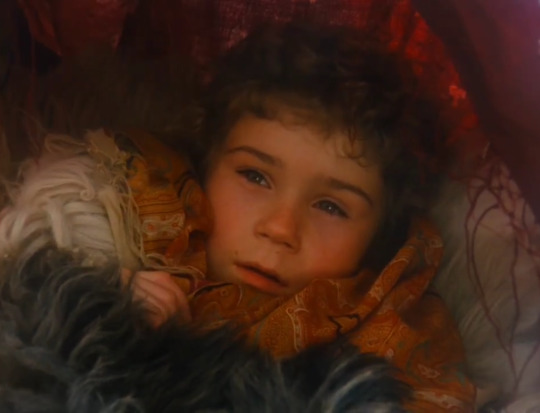
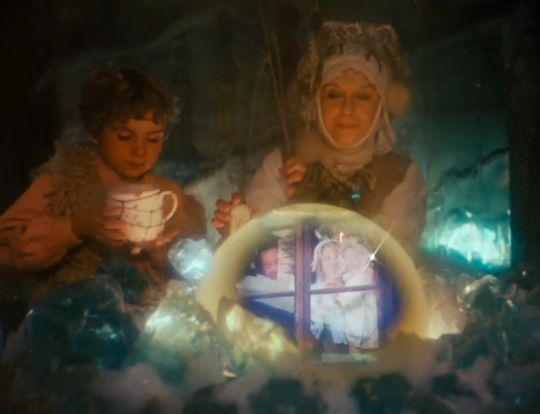


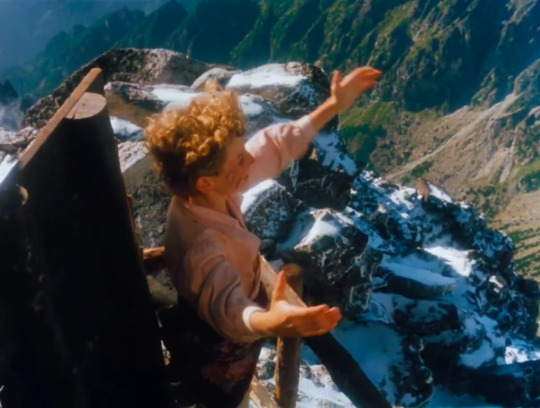





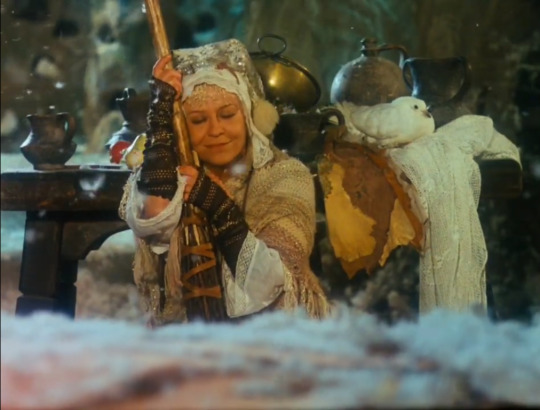
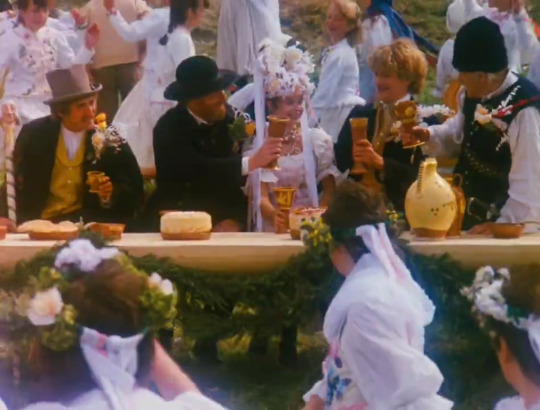
The Feather Fairy (1985)
#the feather fairy#lady winter#frau holle#juraj jakubisko#giulietta masina#tobias hoesl#Petra vancikova#sona valentova#talks
10 notes
·
View notes
Video
Green Pantsuit von Marie-Christine Bouvier Über Flickr: Me trying on a nice green pantsuit at Breuninger in Erfurt. Well, would't that be a faboulous outfit for work? Hier probietre ich einen schönen grünen Hosenanzug bei Breuninger in Erfurt an. Na. das wäre doch ein super Outfit für die Arbeit, oder?
#beauty#crossdresser#Dame#elegant#feminin#feminine#femme#femme side#Kostüm#Frau#lady#Marie-Christine#Sekretärin#Secretary#schön#tgirl#tgurl#transvestite#pant suit#pants#Hosenanzug#flickr
4 notes
·
View notes
Photo

Secret police
#secret police#leather women#stilleto boots#korean girl#gloves#officer cap#kinky asian lady#uber#frau
12 notes
·
View notes
Text

Are my tits right for your hands?
207 notes
·
View notes
Text
Bridge inspection

#women in uniform#military cap#uber frau#woman in uniform#black gloves#black boots#leather lady#railway bridge#Captain
121 notes
·
View notes
Text

White Lady
1 note
·
View note
Text
As you might have noticed with my latest post, I have been looking into Frau Holle recently. And I just read an article by Dominique Peyrache-Leborgne which has some interesting points.
The article starts out by pointing out the difficulty of translating "Frau Holle", the very name of the tale/entity, in French. "Frau" can become easily "Madame" or "Dame", Miss or Lady, no problem... But what about "Holle"? The very name is a part of German folklore - and not just German folklore, a very specific regional folklore in Germany around Hesse - and as such it means nothing to a French audience. Not only that, but since French is a Latin-derived language, unlike German, the very name "Holle" does not bear any connotations, implications or echoes in French the same way it does in German or even English. As such, while there were translations as "Madame Hollé" as early as 1869, the idea of keeping "Frau Holle" as "Frau Holle" or just transliterating as "Lady Holle" is quite recent - and only applies to scholarly translations. Meanwhile, for older or more "common" translations, a specific trend appeared in France, a translation-tradition that still lasts to this day. Translating Frau Holle as "Madame la Neige" (Miss Snow), "Dame Hiver" (Lady Winter) or other cold-related names.
An habit that the author of the article severely criticizes, because while indeed snow plays an important part in the fairytale, Frau Holle is not supposed to be a spirit of winter or an embodiment of the snow - or at least she does not appear exclusively as such. Frau Holle is a very complex cultural figure with various functions and appearances.
To help the audience understand the complexity of Frau Holle, the article presents in a simplified and summarized version the list of supernatural beings that appear in variations of the "Frau Holle" tale around the world - a list extracted from a work by Warren E. Roberts, a "very complete synthesis" called "The Tale of the Kind and Unkind Girls" (1958). To highlight this intertextuality not only helps understand the various roles and elements surrounding the "part" Frau Holle is supposed to play ; while also proving how Frau Holle synthetizes all of those various aspects together.
In most fairytales of the type "The Kind and Unkind Girls", the supernatural being is a female entity of magic. For example, a fairy - fairies are very recurring in this type of fairytale though, unlike in Perrault's famous "Diamonds and Toads", there is never just one fairy, they are always three. It is exemplified by Basile's "The Three Fairies" in his Pentamerone ; they also appear within several Judeo-Spanish fairytales of the Balkans (there was a recent anthology of them translated in French published by the José Corti edition), and it is quite common for these three fairies to be washer-women, or at least tied to water/rivers (several variations in the French region of Gascogne have the fairies as washer-women by the river). There is also an equally important number of fairytales, among these "female tales", where the girls rather deal with witches - characters that very easily replace or are confused with fairies in folktales. The most famous of those witches tale is the one Afanassiev called simply "The Baba Yaga", and where the famous Russian witch plays the part of Frau Holle. A third option also exists for the female magical being: just "an old woman", "little old woman", who is clearly magic but never called by any specific name like "fairy" or "witch" (this type of character, the "magical old woman", not quite a fairy not quite a witch, is very common among the Grimm fairytales). The "simple old woman" appears for example in another one of Basile's tales "The two little pizzas", and in a Bulgarian fairytale "Girl of gold, girl of ashes" (a story which did reach France through the Père Castor collection for children). Sometimes the old woman will ask to have lice removed from her head (for example in Greek fairytales). Finally, in lands with a strong Catholic presence, of course, the female supernatural entity is replaced by the Virgin Mary - something very common among Christianized fairytales, where the Virgin Mary plays the part of every positive female magical character (an example is the Spanish fairytale "Three Balls of Gold").
So we have here a quite coherent group of female entities, though quite ambiguous, the fairy-witch group. There is also a share of those stories that have male characters as the supernatural entity. Usually these are earthly entities tied somehow to nature: in the Ludwig Bechstein's "Golden Mary, Sticky Mary", it is a "wild man" or "savage man", the "Thürschemann" ; in Afanassiev's The Old Grumpy Woman it is a leshy, a male "forest spirit" ; and in Grimm's own "The Three Little Men of the Forest" it is, as the title says, three dwarves living in the woods. When it comes to the male stories, having them be a specific entity related to the weather or the flow of time similar to Frau Holle is quite common: in England you have Jack Frost, in Russia Grandfather Frost ; and in many European fairytales the supernatural group of men embodies either the four seasons or the twelve months (Basile's "The Months" for example ; the article also notes a 1996 French children book "Adeline, Adelune et le feu des saisons", Adeline, Adelune and the fire of the seasons).
Finally, there is also a set of tales with more enigmatic and mysterioues entities, whose roots seem to belong in myths, religious symbolism or magical rituals. For example in the Anglo-Saxon and Celtic traditions, the entity is usually three disembodied heads within a well, that asked for their hair to be brushed, or simply to be treated with respect. Miranda Jane Green evoked this trope within her "Celtic Myths", and James Orchard Halliweel collected a version of it, "The Three Heads in the Well" for his "Popular Rhymes and Nursery Tales of England".
And Frau Holle, as an old and ancient avatar of a lost Germanic goddess, manages to compile and regroup all of those aspects and all those various entities within her. Like the three heads in the well, she is associated with ancient myths and the world of the dead. Like the four seasons, the twelve months, and Jack/Grandfather Frost, she is a spirit of the weather and the cycle of time. Like the wild-men and forest-spirits, she is an entity of wilderness and nature (the Brothers Grimm, in their "German Legends", do note several times that she leads a "Wild Hunt" throughout the forest). And finally she is the ultimately fairy-witch ; she is the kind and benevolent wise woman... and the terrifying ogress-like long-teethed hag.
A complexity of character, a multiplicity of faces, that is retranscribed within the ungoing debate surrounding the etymology of "Holle". For those who want to study the German fairytales under a mythological angle (Jacob Grimm was one of the most famous names to do so, more recently Eugen Rewermann, a religion specialist, took back the Grimm theory), Holle is survivance of the old pagan goddess of Germany Hulda, a mother-earth goddess (hence why Frau Holle lives underground, down a well). This is notably this analysis that led Lucie Crane, the woman that translated the Grimm fairytales for the edition illustrated by Walter Crane, to translate "Frau Holle" as "Mother Hulda": it was an attempt to give back to her a mythological glory. But other scholars have argued that Frau Holle could also be a female version of this Norse winter-god associated with the dead that appears in the Eddas: Uller/Holler. Another analysis, that is tied to the fairytale, is the homonimy between "Frau Holle" and "die Hölle" - which is "Hell" of course, but since here Frau Holle rules over a benevolet underground "land of the dead", we can think of it as a generic term for the "Underworld" (the same way for example in some languages the Greek Underworld are referred to as "Hell" despite having the paradise of the Elysian Fields). And more so: "Holle" coul also be... "die Holde", which means kindness or benevolence.
Many, many possible readings all true in their own way, which not only testifies to the cultural wealth behind the figure of Frau Holle, but also reflects perfectly how the character is one of paradoxes, duality and multiplicites. Frau Holle is so powerful that she mixes the up and the down - her realm is underground and yet in it she makes it snow in the sky, as a goddess both chthonian and celestial... With Frau Holle, life and death becomes a blur ; and more importantly Frau Holle gathers within her all seasons, because she might make it snow like in winter, her domain is stilled filled with the fresh flowers of spring and the hot sun of summer...
[The author of the article did praise greatly John Warren Stewig's decision of translating the character's name as "Mother Holly" in 2001. "Holly" is close enough to "Holle" in sonority, but it also makes the character feel more familiar to an English-speaking audience since it is a quite common name ; and "Holly" also plays cleverly on both "holly", the plant, one of the defining symbols of winter, and "holy", evoking Frau Holle's alternate roles as a saint or a goddess]
#frau holle#grimm fairytales#mother holle#brothers grimm#mother holly#german fairytales#the kind and unkind girls#fairytale type#fairytale comparisons#supernatural beings#supernatural beings in fairytales#lady winter#mother hulda#european fairytales#mother winter
16 notes
·
View notes
Text
First it was "Step on me, Vampire Mommy..." 😂

She would do numbers on tumblr
4K notes
·
View notes
Video
Green pantsuit von Marie-Christine Bouvier Über Flickr: Me trying on a nice green pantsuit at Breuninger in Erfurt. Well, would't that be a faboulous outfit for work? Hier probietre ich einen schönen grünen Hosenanzug bei Breuninger in Erfurt an. Na. das wäre doch ein super Outfit für die Arbeit, oder?
#crossdresser#Dame#cd#beauty#dress#feminine#feminin#elegant#Frau#Kostüm#lady#Marie-Christine#Secretary#Sekretärin#transvestite#tgirl#tgurl#TV#pant suit#Hosenanzug#flickr
1 note
·
View note
